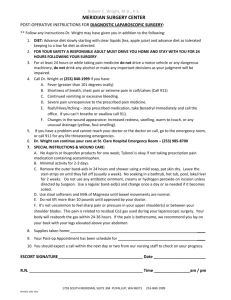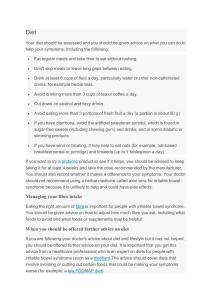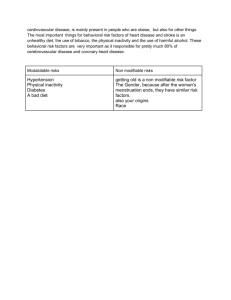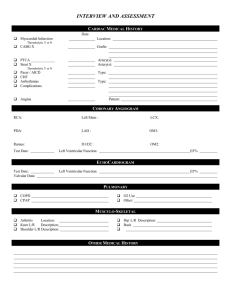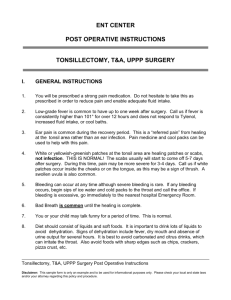Nutrition After a Coronary Artery Bypass Graft (CABG)
advertisement
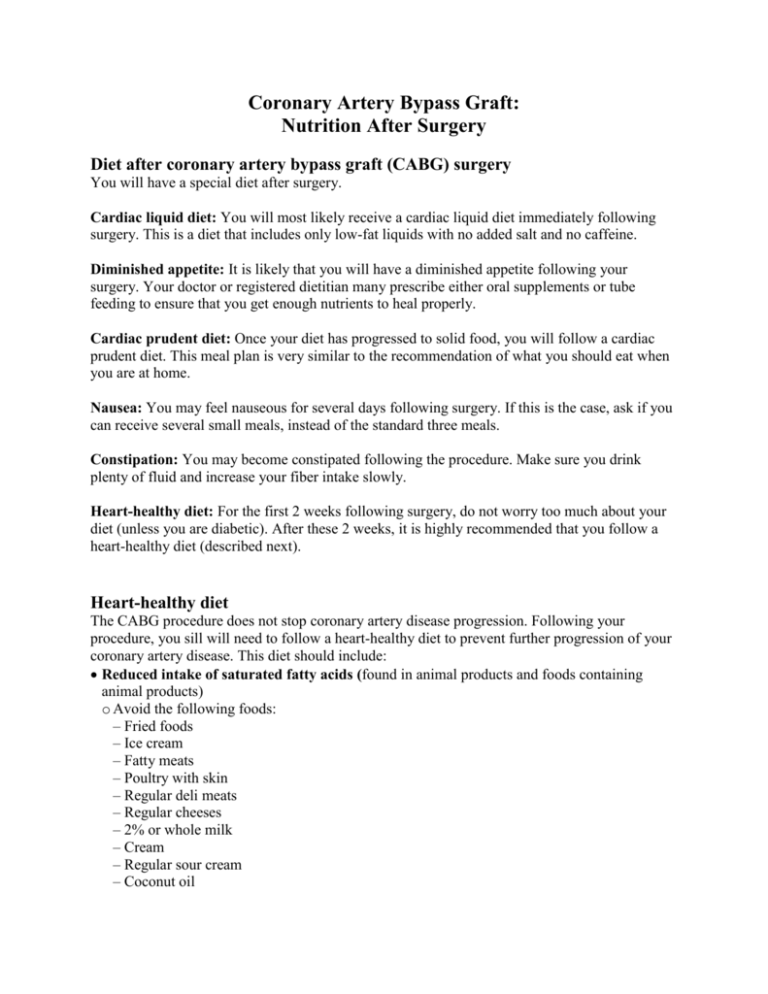
Coronary Artery Bypass Graft: Nutrition After Surgery Diet after coronary artery bypass graft (CABG) surgery You will have a special diet after surgery. Cardiac liquid diet: You will most likely receive a cardiac liquid diet immediately following surgery. This is a diet that includes only low-fat liquids with no added salt and no caffeine. Diminished appetite: It is likely that you will have a diminished appetite following your surgery. Your doctor or registered dietitian many prescribe either oral supplements or tube feeding to ensure that you get enough nutrients to heal properly. Cardiac prudent diet: Once your diet has progressed to solid food, you will follow a cardiac prudent diet. This meal plan is very similar to the recommendation of what you should eat when you are at home. Nausea: You may feel nauseous for several days following surgery. If this is the case, ask if you can receive several small meals, instead of the standard three meals. Constipation: You may become constipated following the procedure. Make sure you drink plenty of fluid and increase your fiber intake slowly. Heart-healthy diet: For the first 2 weeks following surgery, do not worry too much about your diet (unless you are diabetic). After these 2 weeks, it is highly recommended that you follow a heart-healthy diet (described next). Heart-healthy diet The CABG procedure does not stop coronary artery disease progression. Following your procedure, you sill will need to follow a heart-healthy diet to prevent further progression of your coronary artery disease. This diet should include: Reduced intake of saturated fatty acids (found in animal products and foods containing animal products) o Avoid the following foods: – Fried foods – Ice cream – Fatty meats – Poultry with skin – Regular deli meats – Regular cheeses – 2% or whole milk – Cream – Regular sour cream – Coconut oil – Palm kernel oil – Palm oil – Butter – Lard – Shortening – Hard margarines (stick) – High-fat snack foods – High-fat baked goods – Cream soups – High-fat condiments, such as regular mayonnaise or tartar sauce o Trans fats are at least equally as detrimental to your heart health as saturated fatty acids o You can avoid most trans fats by passing up foods that list “partially hydrogenated fatty acids” as an ingredient Increased intake of omega-3 fatty acids o Found in: – Salmon – Herring – Anchovies – Tuna – Flaxseed – Canola oil – Olive oil – Peanut oil – Soy nuts – Walnuts – Butternuts (similar to walnuts) Many fresh fruits and vegetables o If you have diabetes, talk to a registered dietitian about how many servings of these foods you should consume/day Plenty of whole grains o Look for the following words on food labels: – Whole (name of grain), such as whole wheat or whole oats – Wheat berries – Brown rice, such as brown rice flour – Stone-ground whole (name of grain), such as stone-ground whole wheat – Oats or oatmeal A few servings of low-fat or nonfat dairy products each day Limited sodium o The less processed a food is, the less sodium that it will contain Limited alcohol intake Edema You must weigh yourself frequently once you are at home. Rapid weight gain is a sign that you are developing edema (collecting and retaining fluid). If you gain more than 2 pounds in 3 days, it is important that you contact your doctor. Review Date 10/09 G-1126

